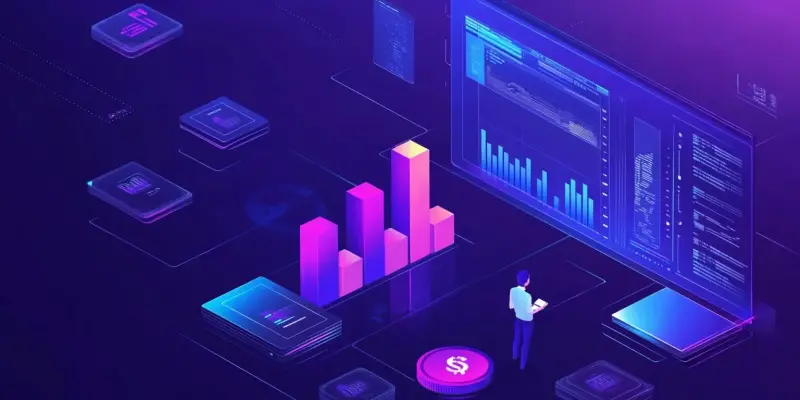The recent advancements in artificial intelligence (AI) have led to its widespread adoption across various industries. The fintech sector is no exception, with firms eager to leverage AI technology to improve efficiency, reduce costs, and gain a competitive edge. While the benefits of employing AI in customer service and financial decision-making have been thoroughly explored, the focus has now shifted to its implementation in back-office operations. Despite AI’s promise of increased productivity and cost savings, the potential drawbacks of automating back-office tasks must be carefully considered. Overlooking these risks could lead to long-term negative impacts on system integrity and operational efficiency.
Risks of Overextending Automation
A common theme in the analysis of AI automation in fintech back-office operations is the risk of overextending automation to the point of compromising the system’s integrity. Brendan Thorpe, Customer Success Manager at Auriga, underscores that banks often seek to enhance outdated systems and processes in their back offices. This drive for improvement often comes with a desire to cut costs, potentially reducing headcount. However, the professionals who manage these systems and processes play vital roles in maintaining checks and balances, many of which involve manual intervention. Overextending automation may result in the loss of these critical capabilities, leaving the system vulnerable to errors and inefficiencies.
Another significant issue Thorpe highlights is the challenge of consolidating data necessary for implementing automated processes. Legacy systems often operate in silos, making it difficult to integrate data into a cohesive structure, such as a data lake. This complexity in data integration poses challenges to the security framework, increasing the attack surfaces and vulnerabilities within the system. To mitigate these risks, financial institutions must adopt robust security strategies, execute stringent network security policies, and engage in continuous monitoring to ensure operational resiliency and protection.
Financial and Resource Challenges
From a financial perspective, the implementation of automation in back-office operations can be a costly endeavor, especially if not executed correctly. Hamish Warnock, Senior Relationship Manager at Canoe Intelligence, points out that while automation can free up employees from repetitive tasks, allowing them to focus on more valuable work, poorly executed automation can strain a company’s resources. Significant investments are required not only in the technology itself but also in support systems and staff training. These substantial upfront costs can be daunting for some firms, even though they may ultimately lead to long-term savings if executed properly.
Warnock also addresses another critical aspect: the resistance to change among teams due to familiarity with existing systems and workflows. Employees may harbor concerns about job displacement, as automation threatens specific administrative roles. However, it is crucial to recognize that back-office tasks often involve unique client-related nuances that still require human judgment. The transition to automated systems must be managed thoughtfully to ensure that the workforce is reassigned to strategic roles and provided with the necessary training to succeed in their new tasks.
Importance of Human Oversight
The human element remains irreplaceable in ensuring that AI processes information accurately and reliably. John O’Connell, founder and CEO at The Oasis Group, emphasizes the importance of having a human in the loop to oversee AI operations. For example, a client service associate in a wealth management firm might use AI to scan and process a potential client’s investment portfolio. However, the associate must verify the AI-generated data before integrating it into financial planning software. A minor error made by the AI could lead to significant inaccuracies, highlighting the need for continual human oversight.
This human verification process is essential for maintaining the integrity of financial operations. By ensuring that the data used in decision-making is both accurate and reliable, firms can mitigate the risks associated with AI errors. Additionally, human oversight helps in identifying and addressing any nuances or unique client-specific factors that the AI might have overlooked, thereby achieving a higher level of personalized service.
Employee Utilization and Adaptation
Successfully integrating automation into back-office operations requires clear change management processes to ensure that employees are effectively utilized and adapted to their new roles. Chris McGee, Managing Director at AArete, emphasizes the importance of reassigning employees to strategic roles and providing proper training on their new tasks. Failure to implement these changes can lead to employees feeling lost and unproductive, risking redundancy and decreasing overall efficiency within the firm.
Additionally, there is a danger in over-relying on automation, which may leave employees unable to handle processes manually when necessary. Ensuring continuous engagement with and understanding of automated systems is crucial for maintaining a balanced approach. This way, employees remain capable of intervening when automation fails or requires human judgment. Providing adequate training and support helps to foster a culture of adaptability, where employees can seamlessly transition between automated and manual processes as needed.
Control and Accountability
The recent strides in artificial intelligence (AI) have ushered in its extensive adoption across a multitude of industries. The fintech sector stands out as innovators eagerly integrate AI technology to boost efficiency, minimize costs, and secure a competitive advantage. While the benefits of using AI in customer service and financial decision-making have been extensively documented, attention is increasingly turning to its role in back-office operations. However, despite AI’s promise of heightened productivity and cost reductions, the possible downsides of back-office automation merit thorough examination. Ignoring these risks could result in detrimental long-term effects on system integrity and overall operational efficiency. The integration of AI demands a careful balance to ensure its advantages do not become overshadowed by potential pitfalls. As fintech firms ride this wave of technological advancement, they must remain vigilant to navigate both its promises and challenges effectively, thus securing sustainable progress in the industry.

